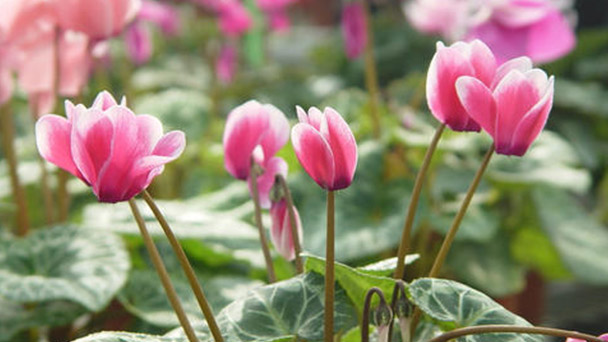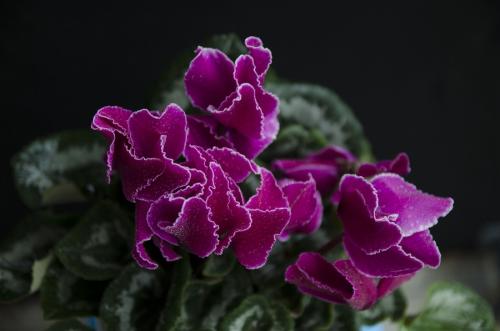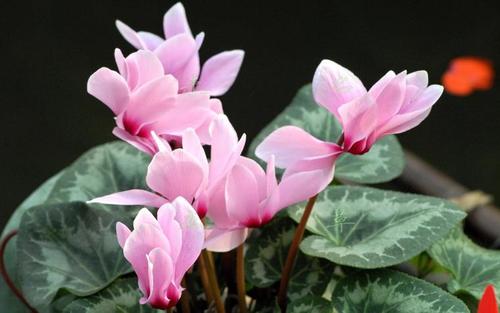Pests and control methods of Cyclamen persicum Mill
Written by Maggie
Jan 26 2021

Cyclamen Persicum Mill has many insect pests. Common pests include aphids, seed flies, starscream and scale insects. Aphids are available for beta molesslowly, nicotinine and amidine and other reagents. Ground seed flies available, octyophosphorus, chloramphenicola flies and deltamethrin and other reagents. Starbuck can be used for ethacazole and acaracai and other reagents. Beta scale insects available for thymidine and other chemical reagents.

1. Cyclamen Persicum Mill aphids control
Aphids are a common pest of Cyclamen Persicum Mill. Aphids can damage the young leaves and flowers of plants, spreading viruses and bacteria that can make plants sick. Aphids reproduction speed is relatively fast, early available pepper water, Ricks, late available beta molestation, smokestine, amidine and other agents. After spraying, plants should be moved to a warm and ventilated position. Molestation.
2. Cyclamen Persicum Mill Ground flies control
Ground flies, also known as ground maggots, have larvae that eat the roots and young stems of plants, killing Cyclamen Persicum Mill by rotting their roots. For ground species flies, chemical agents such as Ecox, phoxim, pyrethroid and deltamethrin can be used for insect control. Dilute the insecticides with water according to the instructions and spray the medicine on the stem, root and soil. It can be removed after four times of continuous spraying.

3. Cyclamen Persicum Mill starscream control
Starscream, attached to the back of the Cyclamen Persicum Mill leaves, propagates and spreads the disease. It also feeds on the leaves, making the plant soft and dry. In the amount of less words, we can add good vinegar or soapy water to wipe the leaves. Moreover, the need to cut off the insect leaves, the alternate use of mite risk, ethyl acazole and acari chemical agents, late antimicrobial agents can be used for prevention.
4. Cyclamen Persicum Mill scale insects control
The insect will harm the young leaves and flowers of Cyclamen Persicum Mill, which has a strong reproductive capacity but is relatively easy to remove.In the case of small quantity, the leaves can be wiped with soapy water or chili water; in the case of large quantity, the leaves and stems of the plant can be sprayed with chlorothalonil or carbendazem solution, and then the plant can be moved to a warm and ventilated place for curing.

Latest Updated
- Benefits of Bugleweed - 7 Science-backed Health Benefits
- Bugleweed Dangers & Side Effects - Is It Poisonous?
- How to Plant Evergreen Trees - What You Should Know
- When to Plant Evergreens - Grow Guide for Evergreen Trees
- 12 Wonderful Evergreen Shrubs for Your Garden
- 12 Popular Evergreen Plants with Pictures for Beginners
- When And How To Prune A Lilac Bush Like a Pro
- How to Grow & Care for Lilac Vine (Hardenbergia Violacea)
- Japanese Lilac Tree (Syringa Reticulata) Care & Propagation Guide
- Shumard Oak Pros and Cons - What to Know
Popular Articles
- Winter maintenance of Antirrhinum Majus
- How to Grow Terminalia Mantaly Tree
- How to Grow and Care for Crossostephium Chinense
- How to grow Antirrhinum Majus in spring
- Peristeria Elata (Dove Orchid) Profile: Info & Care Guide
- Underwatered Snake Plant (Sansevieria Trifasciata) - Signs And How To Fix
- How to Care for Brazilian Jasmine Plant (Mandevilla Sanderi)
- How to Grow & Care for Graptopetalum Purple Delight in Summer
- Rosa Chinensis (China Rose): Plant Growing & Care Tips
- How to Care for Baby Sun Rose (Aptenia Cordifolia)